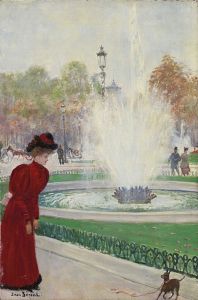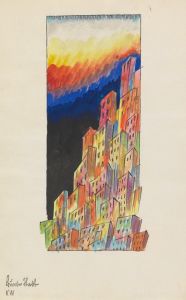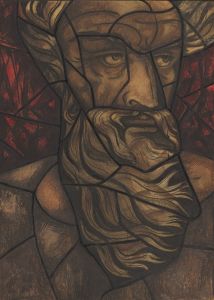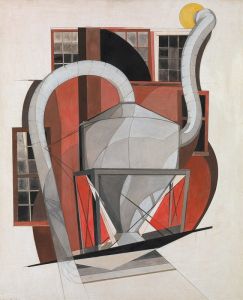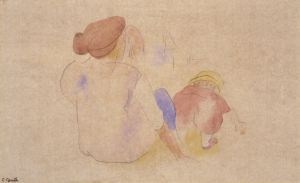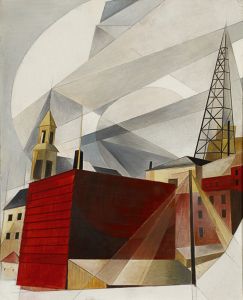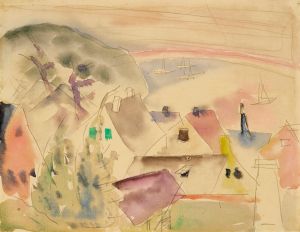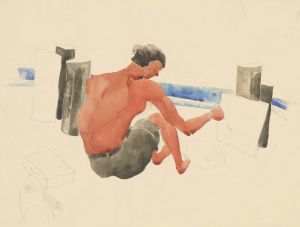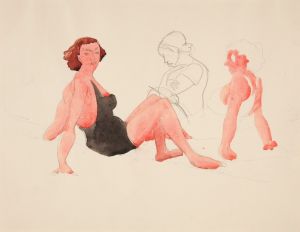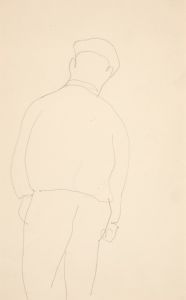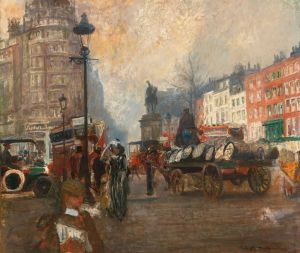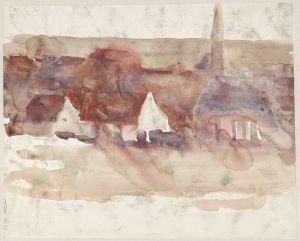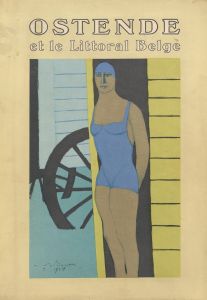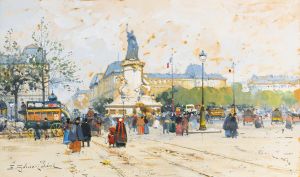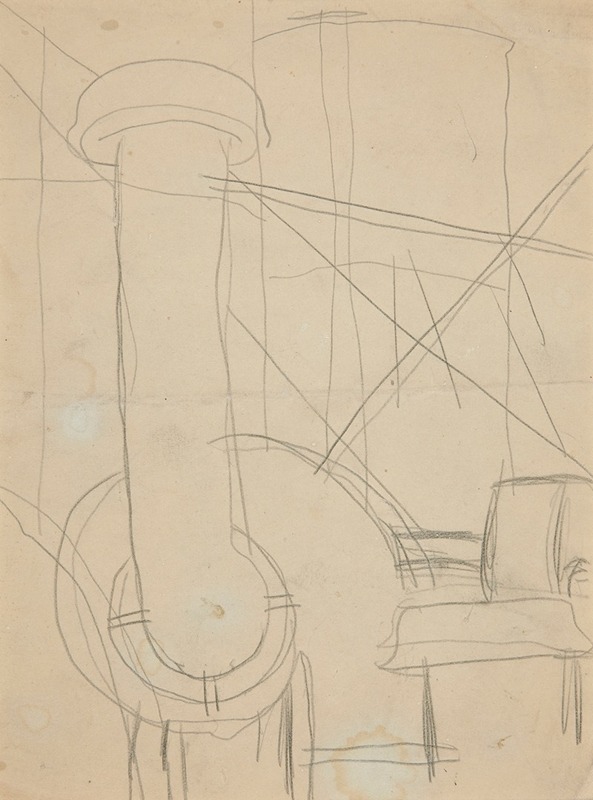
Study for Pacquebot ‘Paris’
A hand-painted replica of Charles Demuth’s masterpiece Study for Pacquebot ‘Paris’, meticulously crafted by professional artists to capture the true essence of the original. Each piece is created with museum-quality canvas and rare mineral pigments, carefully painted by experienced artists with delicate brushstrokes and rich, layered colors to perfectly recreate the texture of the original artwork. Unlike machine-printed reproductions, this hand-painted version brings the painting to life, infused with the artist’s emotions and skill in every stroke. Whether for personal collection or home decoration, it instantly elevates the artistic atmosphere of any space.
Charles Demuth's Study for Pacquebot ‘Paris’ is a watercolor painting created by the American modernist artist Charles Demuth. Known for his contributions to the Precisionist movement, Demuth often explored themes of industrialization, modernity, and urban landscapes in his works. This particular piece, Study for Pacquebot ‘Paris’, reflects his interest in maritime subjects and the sleek, geometric forms associated with modern transportation.
The painting is a study, meaning it was likely created as a preparatory work or exploration for a larger or more finalized piece. It depicts the French ocean liner SS Paris, a luxury passenger ship that was launched in 1916 and operated by the Compagnie Générale Transatlantique (French Line). The word "Pacquebot," which appears in the title, is a French term for "packet boat" or "mail boat," referring to ships that carried mail along with passengers and cargo.
Demuth's use of watercolor in this study showcases his mastery of the medium, with clean lines and a focus on the interplay of light and shadow. The painting emphasizes the streamlined, modern design of the ship, aligning with the Precisionist aesthetic, which celebrated the beauty of industrial and mechanical forms. The composition likely reflects Demuth's fascination with the visual language of advertising and graphic design, as seen in many of his other works.
While the exact date of the painting is not confirmed, it is consistent with Demuth's broader body of work from the 1920s and early 1930s, a period during which he produced many studies and paintings inspired by industrial and architectural subjects. Demuth's works from this era often combine elements of abstraction with representational forms, creating a unique visual style that bridges traditional and modernist approaches.
Study for Pacquebot ‘Paris’ is part of Demuth's legacy as a key figure in American modernism. His works are held in major collections, including the Metropolitan Museum of Art and the Whitney Museum of American Art, though the specific location of this study is not widely documented. Demuth's contributions to the Precisionist movement and his innovative approach to watercolor painting continue to be celebrated in the history of American art.





